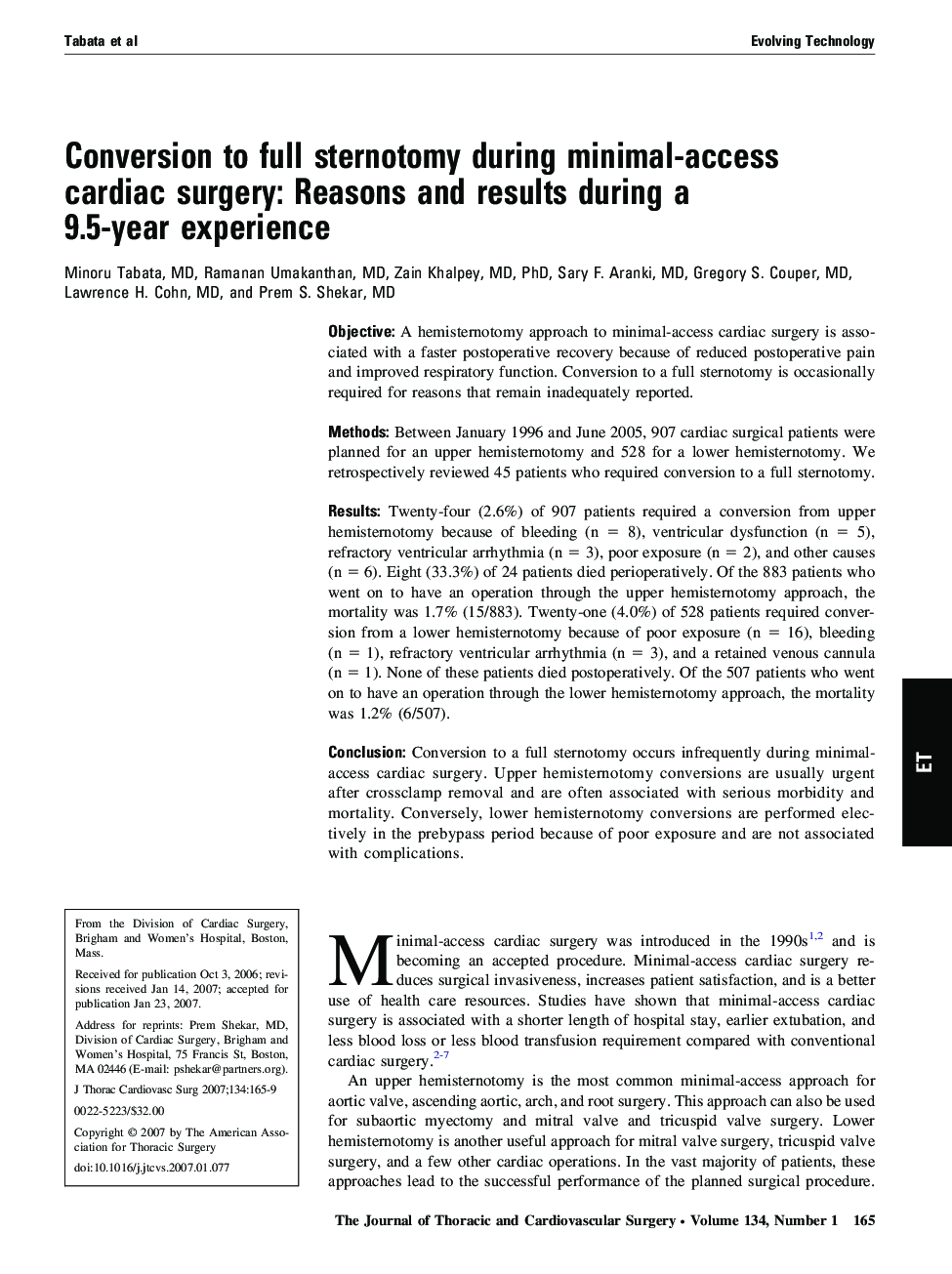| Article ID | Journal | Published Year | Pages | File Type |
|---|---|---|---|---|
| 2983465 | The Journal of Thoracic and Cardiovascular Surgery | 2007 | 5 Pages |
ObjectiveA hemisternotomy approach to minimal-access cardiac surgery is associated with a faster postoperative recovery because of reduced postoperative pain and improved respiratory function. Conversion to a full sternotomy is occasionally required for reasons that remain inadequately reported.MethodsBetween January 1996 and June 2005, 907 cardiac surgical patients were planned for an upper hemisternotomy and 528 for a lower hemisternotomy. We retrospectively reviewed 45 patients who required conversion to a full sternotomy.ResultsTwenty-four (2.6%) of 907 patients required a conversion from upper hemisternotomy because of bleeding (n = 8), ventricular dysfunction (n = 5), refractory ventricular arrhythmia (n = 3), poor exposure (n = 2), and other causes (n = 6). Eight (33.3%) of 24 patients died perioperatively. Of the 883 patients who went on to have an operation through the upper hemisternotomy approach, the mortality was 1.7% (15/883). Twenty-one (4.0%) of 528 patients required conversion from a lower hemisternotomy because of poor exposure (n = 16), bleeding (n = 1), refractory ventricular arrhythmia (n = 3), and a retained venous cannula (n = 1). None of these patients died postoperatively. Of the 507 patients who went on to have an operation through the lower hemisternotomy approach, the mortality was 1.2% (6/507).ConclusionConversion to a full sternotomy occurs infrequently during minimal-access cardiac surgery. Upper hemisternotomy conversions are usually urgent after crossclamp removal and are often associated with serious morbidity and mortality. Conversely, lower hemisternotomy conversions are performed electively in the prebypass period because of poor exposure and are not associated with complications.
